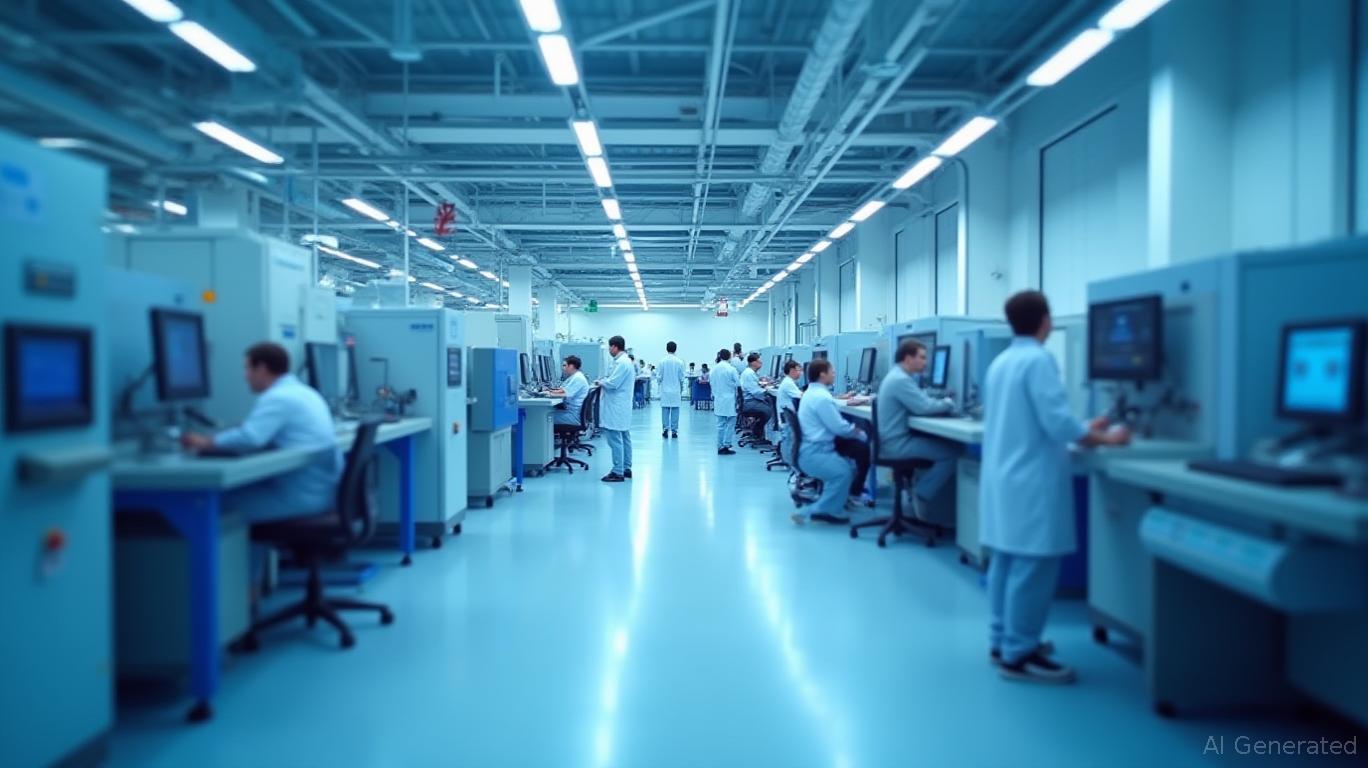Axcelis Technologies: Riding the AI and 5G Wave in a Volatile Semiconductor Landscape
Semiconductor equipment demand is surging as artificial intelligence (AI), 5G, and advanced computing reshape the global tech landscape. Axcelis Technologies (NASDAQ: ACLS), a specialist in critical semiconductor manufacturing tools, stands at the intersection of this growth—positioned to capitalize on long-term trends while navigating near-term industry volatility.

The Niche Advantage: Etch/Deposition Systems and Foundry Demand
Axcelis' core strength lies in its advanced plasma etch and deposition systems, which are indispensable for fabricating the tiny, high-density transistors required for AI chips, 5G infrastructure, and advanced memory (3D NAND). These systems enable precise patterning and film deposition, critical for maintaining yield rates in cutting-edge nodes like 5nm and beyond.
The company's ion implantation technology further strengthens its value proposition. Used in silicon carbide (SiC) semiconductor production—a key enabler of electric vehicles (EVs) and high-power electronics—Axcelis' systems are embedded in 37% of its system revenue, underscoring strategic exposure to EV adoption and industrial electrification.
Order Momentum and Capex Cycles: A Mixed Near-Term Picture
While Axcelis' Q1 2025 revenue dropped 24% year-over-year to $192.6 million, its book-to-bill ratio improved to 0.8x—the highest since late 2023. This signals strengthening order intake, even as broader semiconductor capital spending (CapEx) remains subdued. Management attributes this resilience to:
- Foundry Expansion: Foundries like TSMC and Samsung are ramping production of advanced nodes (3nm, 2nm) for AI and 5G, requiring Axcelis' precision tools.
- 3D NAND Demand: Memory manufacturers are investing in advanced patterning techniques to boost storage density, driving demand for etch/deposition systems.
However, China's reduced CapEx—accounting for just 37% of system sales—reflects trade tensions and macroeconomic slowdowns. Axcelis is mitigating this by boosting sales in the U.S. (23%) and South Korea (20%), aligning with government-backed semiconductor initiatives like the U.S. CHIPS Act.
Risks: Cyclical Volatility and Supply Chain Headwinds
Despite long-term tailwinds, Axcelis faces significant near-term risks:
- Industry Cyclicality: Semiconductor CapEx is cyclical, and 2024 marked a trough in wafer utilization. While demand is expected to rebound in 2025, weak macroeconomic conditions could delay recovery.
- Geopolitical Risks: Tariffs and supply chain disruptions, particularly in Asia, remain a concern. Axcelis' global supply chain optimization—including U.S. manufacturing hubs—aims to mitigate these risks.
- Margin Pressures: Q2 2025 guidance projects a 42% non-GAAP gross margin, down from 46.4% in Q1, reflecting lower revenue volumes and pricing pressures.
Financial Fortitude and Investment Thesis
Axcelis' $183.96 million cash position (no debt) and disciplined capital allocation provide a cushion for volatility. Share repurchases ($18.2 million in Q1) and R&D investments (targeting SiC and advanced packaging) suggest management is prioritizing long-term value.
The company's non-GAAP operating margin of 18.3% in Q1—despite revenue declines—demonstrates operational efficiency. While near-term earnings are challenged, Axcelis' focus on high-margin services (e.g., spare parts, maintenance) and niche technologies positions it to outperform in upcycles.
Buy, Hold, or Wait?
Hold for now, but consider a long-term buy at lower levels.
- Bull Case: If AI/5G demand accelerates and foundries ramp CapEx, Axcelis' backlog could grow rapidly. The stock's ~12.5x 2025E forward P/E is reasonable for a niche growth leader.
- Bear Case: If semiconductor CapEx remains sluggish beyond [this point], Axcelis' exposure to trade tensions and margin pressures could weigh on multiples.
Historical backtests further highlight the risks: a strategy of buying 5 days before quarterly earnings and holding for 20 days from 2020 to 2025 resulted in a -13.23% average return, with a maximum drawdown of -35.97% and volatility of 20.07%, underscoring the challenges of timing the stock around earnings events.
Investors should monitor:
1. SiC Adoption Rates: EV manufacturers' production targets will directly impact Axcelis' SiC tool sales.
2. Q2 Revenue Trends: A stabilization at $185 million (vs. Q1's $192.6 million) would signal a bottoming-out of the downturn.
Final Analysis
Axcelis is a high-risk, high-reward bet on the next wave of semiconductor innovation. Its technologies are essential for AI, 5G, and EVs, but execution in a volatile industry will determine returns. For patient investors, the stock's current valuation and cash-rich balance sheet make it a compelling candidate for a long-term portfolio—provided they can stomach near-term volatility.
Final Note: The semiconductor cycle typically lasts 3–5 years. With AI-driven demand poised to reshape the sector, Axcelis' niche positioning may reward investors who look beyond the current downturn.

Comments
No comments yet